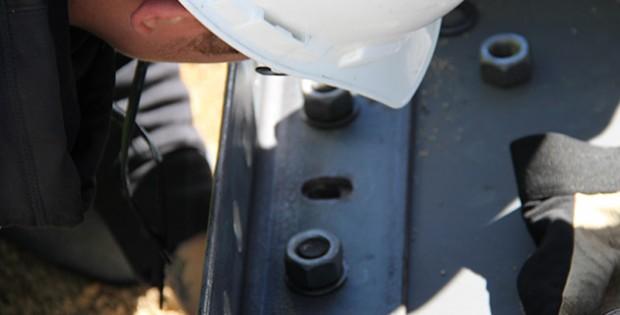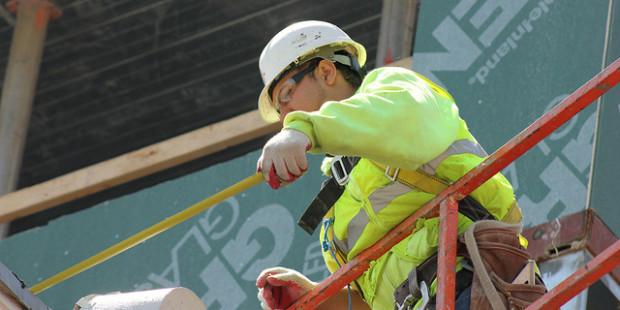Weld-up or Bolt-up Steel Buildings: Which is Better?

As you may have seen, there are incredible differences in quality throughout the pre-engineered metal building industry. You might have witnessed it yourself so far as you do your research into steel building companies, or you might have some experience after speaking to friends, neighbors or the professionals. The truth is, even after you make the decision to start a steel building project, you might be in a position to decide between a weld-up steel building and a bolt-up steel building. Most steel buildings are constructed in one of these two ways, but only one is truly suitable for the do-it-yourselfer.
What are weld-up steel buildings?
Weld-up steel buildings are usually fabricated, for the most part, at the job site. Usually all the framing and components are measured and cut then welded together by the builder.
What are bolt-up steel buildings?
 Bolt-up steel buildings are manufactured in a fabrication facility or factory. Engineers and designers generate professional drawings based off precise calculations, which must abide by local codes and loads for the end user’s specific location. At the factory, expert fabricators and welders focus on every detail, from punching holes to welding frames. All the welding is done in the fabrication facility in a quality controlled environment.
Bolt-up steel buildings are manufactured in a fabrication facility or factory. Engineers and designers generate professional drawings based off precise calculations, which must abide by local codes and loads for the end user’s specific location. At the factory, expert fabricators and welders focus on every detail, from punching holes to welding frames. All the welding is done in the fabrication facility in a quality controlled environment.
So Which Building Type is Better?
Time – Any time you receive raw materials, whether it’s raw lumber for a pole barn, or steel you must weld yourself, you’re adding extra time to the construction process. All major connections of Armstrong Steel buildings are bolt-together with pre-punched holes, and most components are precut and numbered to correspond with your drawings for quick assembly.
 Quality – You can have the perfect foundation and best materials, but poor connections equals poor structural integrity. For this reason, most factories that manufacturer bolt-up steel buildings employ quality control staff and certified welding inspectors. A certified welding inspector should verify all structural welding for compliance and safety reasons. Weld-up steel buildings don’t usually have this type of quality control in place. You will end up having to hire someone, most likely at a high hourly rate, to come to your property and view your welds or your contractor’s welds. By choosing bolt-up steel buildings, you eliminate this extra cost consideration. All of Armstrong Steel’s welders are certified to the American Welding Society D1.1 structural code.
Quality – You can have the perfect foundation and best materials, but poor connections equals poor structural integrity. For this reason, most factories that manufacturer bolt-up steel buildings employ quality control staff and certified welding inspectors. A certified welding inspector should verify all structural welding for compliance and safety reasons. Weld-up steel buildings don’t usually have this type of quality control in place. You will end up having to hire someone, most likely at a high hourly rate, to come to your property and view your welds or your contractor’s welds. By choosing bolt-up steel buildings, you eliminate this extra cost consideration. All of Armstrong Steel’s welders are certified to the American Welding Society D1.1 structural code.
Cost – Initial weld-up building materials could be somewhat less than a bolt-up steel building, but those material costs are offset when you consider the entire project’s lifetime. With weld-up buildings, repairs or routine maintenance is much more expensive and labor intensive in the long run. If a bolt-up steel building ever sustained damage, simply unbolt and replace with a similar component from the manufacturer. Again, there is no welding or cutting required.
Erection – Bolt together steel buildings are pre-engineered and designed by in-house engineers to go up quickly and efficiently. Most first time builders opt to go for bolt-up steel buildings for the ease of assembly, especially since they can erect the building themselves and spare the extra expense of a contractor. Any builder with a set of ordinary tools and easy to read instructions can erect a bolt together steel building.
Bolt-up steel buildings are much more durable, flexible and cost effective than weld-up steel buildings. For first time builders interested in ease of construction, quality and especially safety, the choice is simple. Bolt together buildings and do-it-yourselfers are a match made in construction heaven.
« The Benefits of Using Steel Buildings as Storage Units
The Potential Pitfalls of Purchasing a Steel Building from a Broker »
Popular Posts

By telling you this, I guess I’m letting the cat out of the bag. Still, I feel like every general contractor can benefit from what I’m about to tell you. As you continue to look for more business, what are some of the tactics you are using? While some contractors might look towards making a… …

Ever so slowly, the construction industry is recovering from the economic collapse in 2008. In several areas across the country, a lack of skilled workers has been driving up the price of construction. While it’s not true everywhere in the U.S., a survey of the National Association of Home Builders (NAHB) national membership in June… …

